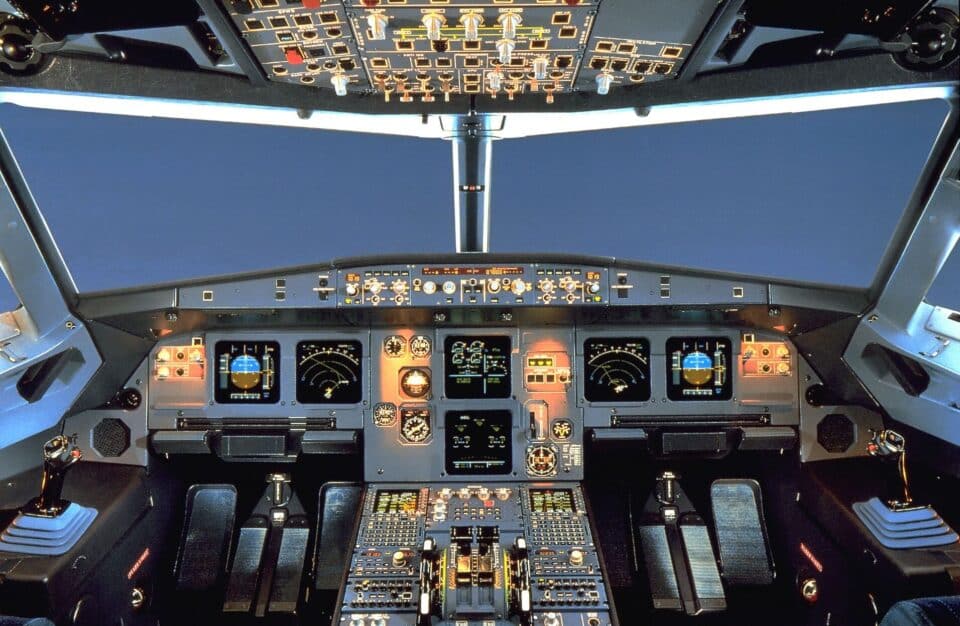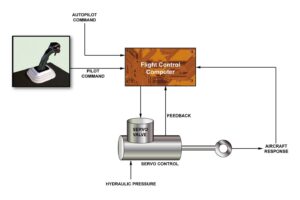Aerospace
What is Fly-by-wire system ? how it reduced aircraft maintenance

It’s a proven truth that since the 1950s, and particularly over the last three decades, our sector has made major advancements in safety, and technology has played a big role in ensuring that the safety records of the whole aviation industry have greatly improved.
In this article, we discuss a few of the technological advancements that have significantly enhanced the safety of our goods. Fly-by-wire will be discussed first.
Fly-by-wire flight control systems are those that use computers to process the pilot or autopilot’s inputs for flight control and then send the relevant electrical signals to the actuation on the flight control surface. Direct mechanical linking is being replaced by this technology.
Fly-by-wire has a number of benefits, including the possibility to save weight by doing away with cables, pulleys, and rods, as well as increased safety, durability, and manoeuvrability.
Since the first Airbus A320, which debuted in 1988, and the most recent models of competing aircraft, including the B777, B787, and Embraer E-jets, fly-by-wire technology has been a standard feature on every Airbus aircraft, including the A220.
The aircraft that have been used but since, known as the fourth-generation aircraft, have collected more than 30 years of in-service time. A fleet of more than 14,500 operational aircraft represented more than 200 million cumulative flights as of the end of 2021, which is a solid statistical base. The safety and effectiveness of aircraft operations have been greatly enhanced by fly-by-wire.
For more information, please visit our history section.
Courtesy : Airbus

Aerospace
When Ratan Tata was denied entry to the airfield at the Aero India show, he waited

During our visit to Aero India 2019, we had the unexpected opportunity to see Ratan Tata at the event, which was a thrilling moment for us. However, there was a surprising hiccup when the security staff didn’t allow him to enter due to a lack of a security pass.
Despite this, he remained calm and patiently waited for about 20 minutes until a member of the Tata team brought him the required pass, after which he calmly proceeded inside. It was a humbling sight, showcasing his composed demeanor even in such situations.
Ratan Tata ji is not only a renowned industrialist but also a trained pilot, holding a pilot’s license. In 2007, he became the first Indian civilian to fly the F-16 Falcon during the Aero India show in Bangalore—a proud moment for the nation.
His passion for aviation extended beyond flying, as he played a key role in shaping India’s aerospace industry. Under his leadership, Tata ventured into manufacturing and maintaining aerospace components while upholding its legacy of quality. Notably, Tata’s collaboration with Airbus to develop and manufacture the C295 aircraft is a testament to its growing influence in the sector.
-

 Aviation2 months ago
Aviation2 months agoMicrosoft Flight Simulator Raises $3 Million to Bring Back the An-225 Mriya
-

 Airlines2 months ago
Airlines2 months agoQantas Engineers Stage Walkout Over Cost of Living Concerns
-

 Airlines2 months ago
Airlines2 months agoQatar Citizens Can Travel to the United States Without a Visa
-

 Aviation2 months ago
Aviation2 months agoQatar Airways bans these new Electronic Devices on plane
-

 Airlines2 months ago
Airlines2 months agoJapan Airlines Rolls Out Free Domestic Flights to International Passengers
-

 Defence2 months ago
Defence2 months agoWhich Country Has the Largest Fleet of Fighter Aircraft?
-

 Airport2 months ago
Airport2 months agoWestern Sydney Airport Welcomes Its First Plane After 6 Years of construction
-

 Aviation2 months ago
Aviation2 months agoDid you know ? Once Boeing 747 carried 1088 passenger in 1991









